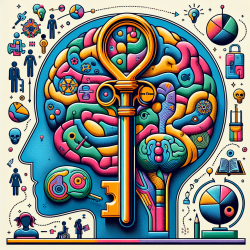Understanding the Link: Phonological Processing and Speech Perception
In the realm of speech-language pathology, creating effective strategies for improving children's reading skills is paramount. Recent research, "Relation between Phonological Processing, Auditory Processing and Speech Perception among Bilingual Poor Readers," sheds light on the intricate relationship between phonological processing and speech perception, offering valuable insights for practitioners.
The Study at a Glance
The study involved 20 children aged 7-12, split evenly between typically developing readers and those identified as poor readers. Researchers assessed auditory processing, speech perception in noise, and phonological processing skills. The findings revealed significant deficits in phonological awareness, verbal short-term memory, and rapid automatized naming among poor readers, alongside challenges in speech perception in noise.
Key Findings
- Phonological Processing Deficits: Poor readers exhibited significant challenges in phonological awareness and rapid automatized naming, which are crucial for reading development.
- Speech Perception in Noise: A strong correlation was found between poor speech perception in noise and phonological processing deficits, suggesting that speech perception plays a critical role in reading difficulties.
- No Significant Auditory Processing Difference: Interestingly, auditory processing abilities did not significantly differ between the two groups, indicating that phonological and speech perception skills are more closely linked to reading challenges.
Implications for Practitioners
For practitioners, these findings underscore the importance of focusing on phonological processing and speech perception when addressing reading difficulties. Here are some actionable strategies:
- Enhance Phonological Awareness: Implement targeted interventions to improve phonological awareness, such as phoneme segmentation and manipulation exercises.
- Improve Speech Perception in Noise: Consider using assistive listening devices like sound field amplification systems or personal FM systems to enhance speech perception in noisy environments.
- Incorporate Multi-Sensory Approaches: Utilize multi-sensory teaching methods that engage auditory, visual, and kinesthetic modalities to reinforce phonological and speech perception skills.
Encouraging Further Research
While this study provides valuable insights, it also highlights the need for further research. Exploring the impact of assistive listening devices on reading outcomes in poor readers could offer additional strategies for practitioners. Additionally, investigating the long-term effects of phonological and speech perception interventions can deepen our understanding of effective practices.
To read the original research paper, please follow this link: Relation between Phonological Processing, Auditory Processing and Speech Perception among Bilingual Poor Readers.










